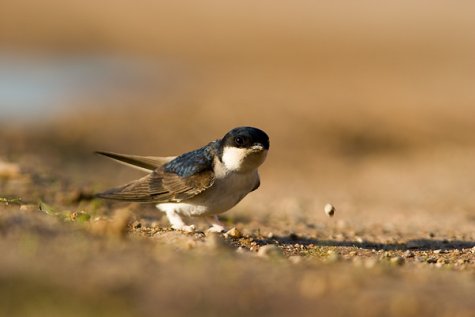About house martins
Text: EOÜ
Photo: Sven Zacek
Nature sound: Veljo Runnel
Translation: Liis
Colleting nest material
You are missing some Flash content that should appear here! Perhaps your browser cannot display it, or maybe it did not initialize correctly.
|
House martin
|
Räästapääsuke
|
|
|
|
The house martin is a passerine with blue-black upper parts and pure white underparts. You can identify house martins unfailingly by the shining white patch at the rump that is particularly noticeable in flight. Its tail is clearly less deeply forked than the barn swallow’s. The legs are feather-covered to the claws. The most frequent call is the characteristic „britt, britt...“, for alarm „triii-triii…“ is used.
House martins nest near humans, but also at the cliff banks on the coast. They build closed nests, half-globe shaped, under the eaves on exterior walls of stone buildings. Mostly house martins nest in colonies. There are 4-5 white eggs in the nest and some pairs nest twice in the course of a summer. Most chicks hatch at the end of June or in July and spend a little less than three weeks in the nest. As other swallows the house martins feed on insects in the air, but they catch their insects at higher altitudes than the barn swallows.
House martins often fall prey to cats, but their nests are frequently destroyed by people who do not like the droppings of the chicks that are pushed out of the nest. Among natural enemies the faster birds of prey can also be mentioned.
About 80 000 – 150 000 house martin pairs nest in Estonia and their number is falling. The house martin is not a protected species.









